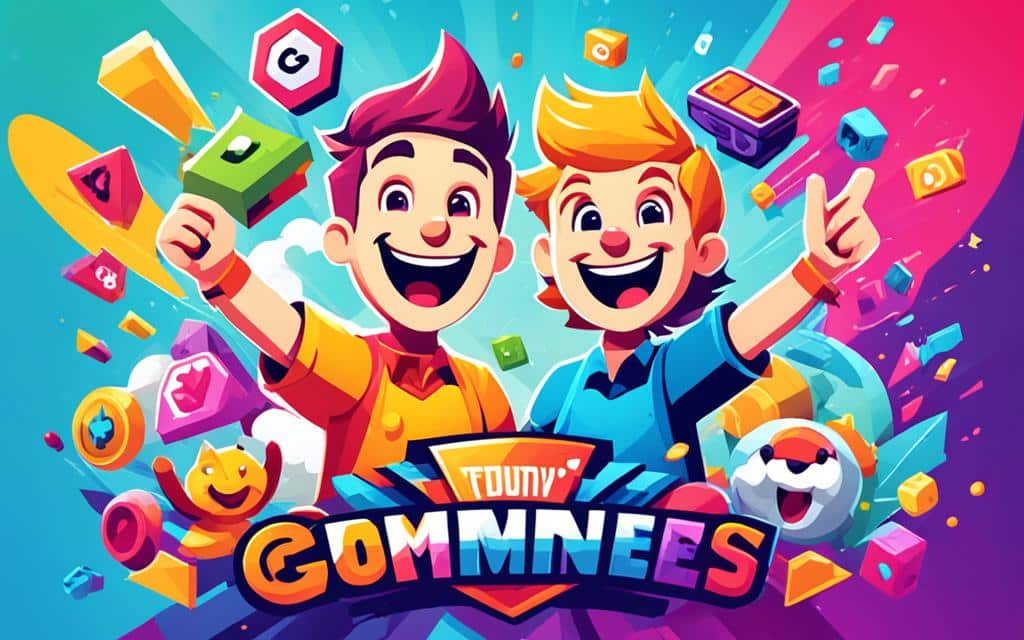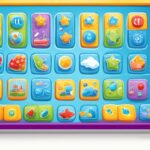Table of Contents
Gamification is a powerful technique that can significantly increase engagement in interactive design. Companies like Google, Nike, Starbucks, LinkedIn, and Amazon have successfully leveraged gamification to enhance user experiences and drive customer loyalty and satisfaction. By applying game design concepts to non-gaming environments, gamification makes the user interface more engaging and interactive.
Gamification involves incorporating elements such as points, levels, badges, and leaderboards into the design, providing users with a sense of challenge, achievement, and progress. Volkswagen’s experiment with the Piano Staircase is a perfect example of how gamification influences behavior and increases engagement.
In the following sections, we will explore the psychology behind gamification, the benefits it offers in UX design, key elements to consider when implementing gamification, and various ways businesses can leverage this technique to enhance customer engagement, employee training, sales, and marketing strategies.
The Psychology Behind Gamification
Gamification has gained significant popularity in recent years due to its ability to tap into innate human impulses and drives. By understanding the psychological factors that motivate individuals, designers can create engaging experiences that enhance user engagement and motivation.
The Role of Dopamine in Gamification
The brain releases dopamine, a neurotransmitter associated with pleasure and reward, when individuals complete tasks and achieve goals in a game. This dopamine release creates feelings of pleasure and increases motivation, driving users to continue participating in the experience.
Research has shown that dopamine release in response to winning or completing challenges in a game is similar to the release of dopamine during pleasurable experiences such as eating food or engaging in social interactions.
By incorporating gaming elements into non-gaming environments, such as earning points and badges, designers can tap into our natural response to rewards and create a sense of achievement and progression for the users.
Visible Signs of Progress and Motivation
Visible signs of progress, such as leveling up or finishing a progress bar, provide users with a sense of accomplishment and motivate them to continue engaging. These clear indicators of progress enable individuals to track their achievements and understand how much closer they are to reaching their goals.
Social Influence and Competitiveness
Social influence and competitiveness can be powerful motivators in gamified experiences. Features like leaderboards and team challenges foster a sense of competition among users, encouraging them to strive for higher rankings and surpass their peers.
Additionally, the social aspect of gamification allows users to compare their progress with others, leading to increased participation and engagement.
Psychological Factors and their Impact on Gamification
| Psychological Factor | Impact on Gamification |
|---|---|
| Dopamine Release | Creates feelings of pleasure and motivation |
| Reward Systems | Tap into our natural response to rewards and enhance engagement |
| Visible Signs of Progress | Motivate users by providing a sense of accomplishment and tracking their achievements |
| Social Influence and Competitiveness | Motivate users through competition and social comparison |
Benefits of Gamification in UX Design
Gamification in UX design offers numerous benefits that can significantly enhance user engagement, loyalty, and overall satisfaction. By incorporating game elements and mechanics into the user experience, businesses can create a more immersive and interactive environment that captivates users and encourages them to return for more. Let’s explore some of the key benefits of gamification in UX design:
- User Engagement and Retention: Gamification increases user engagement by providing a more enjoyable and rewarding experience. By offering challenges, rewards, and a sense of progress, users are more likely to stay engaged and spend more time using the product or service. This leads to repeat encounters and longer user sessions, which are essential for building a strong user base.
- Brand Affinity and Loyalty: By incorporating gamified elements, businesses can strengthen their brand affinity and cultivate user loyalty. Engaging experiences that align with a brand’s identity and values create a positive emotional connection with users, making them more likely to choose and recommend the brand over competitors.
- Enhanced Learning: Gamification improves motivation and usability, making the learning process more engaging and effective. By integrating educational content with game mechanics, users are motivated to progress and achieve mastery. This method has been proven to enhance knowledge retention and improve learning outcomes.
- Increase in Engagement: Research has shown that motivation to complete or win games increases engagement by 48%. By tapping into users’ intrinsic motivation, gamification provides a powerful tool for keeping users engaged and invested in an experience.
- Motivated Employees and Improved Performance: Gamification is not limited to customer-facing applications; it also has significant benefits in employee training and performance evaluation. When training programs are gamified, employees are more motivated, leading to better performance in skill-based evaluations and a more positive learning experience.
Implementing gamification in UX design unlocks a range of benefits that contribute to a more engaging, enjoyable, and successful user experience. By leveraging game mechanics and incentives, businesses can create a loyal user base, drive user engagement, and achieve their goals more effectively.
Key Elements of Gamification in UX Design
Gamification is a powerful strategy in user experience (UX) design that leverages various elements to motivate and engage users. By incorporating these gamified elements into the design, companies can create an immersive and interactive user experience that keeps users coming back for more.
Clear and Realistic Goals
One of the key elements of gamification in UX design is setting clear and realistic goals for users. These goals provide a sense of direction and purpose, motivating users to stay engaged with the design. Whether it’s completing a task, reaching a certain level, or unlocking a new achievement, clear goals create a sense of progression and accomplishment.
Incentive Systems
In addition to clear goals, incentive systems play a crucial role in gamification. These systems reward users for their actions and encourage further participation. Incentives can take various forms, such as points, badges, stickers, time limits, avatars, and levels. By offering meaningful rewards, UX designers can create a sense of challenge, achievement, and progression, keeping users engaged and motivated throughout their journey.
Examples of Gamified Elements
There are numerous gamified elements that UX designers can incorporate into their designs. These elements serve different purposes and cater to different user preferences. Here are some popular examples:
- Badges: Badges are visual representations of achievements or milestones that users can earn. They not only provide a sense of accomplishment but also act as a form of recognition within a community or platform.
- Stickers: Stickers serve a similar purpose to badges, but with a more playful and visually appealing approach. They can be collected, customized, and used to decorate a user’s profile or virtual space.
- Time Limits: Introducing time limits adds an element of urgency and challenge to UX designs. Users are incentivized to complete tasks within a specified timeframe, boosting engagement and motivation.
- Avatars: Avatars allow users to create virtual representations of themselves within a design. Customizing avatars and seeing them evolve throughout the user’s journey adds a personal touch and fosters a deeper connection with the experience.
- Rewards: Rewards like points and levels provide tangible benefits to users as they progress. Points can be accumulated and exchanged for perks, while leveling up signifies mastery and unlocks new features or content.
By carefully choosing and implementing these gamified elements, UX designers can create a dynamic and engaging user experience tailored to their target audience’s preferences and goals.
| Gamified Elements | Purpose |
|---|---|
| Badges | Recognize achievements and provide a sense of accomplishment |
| Stickers | Allow users to collect and customize virtual stickers as rewards |
| Time Limits | Add urgency and challenge to tasks, increasing engagement |
| Avatars | Enable users to create and personalize virtual representations |
| Rewards | Provide tangible benefits as users progress and achieve goals |
8 Ways Businesses Can Use Gamification
Gamification is a versatile tool that businesses can leverage across various industries and contexts. By incorporating gamified elements into their strategies, companies can enhance customer engagement, improve employee training, and boost sales and marketing efforts. Here are eight specific ways businesses can make use of gamification:
- Enhancing Customer Engagement: Businesses can employ gamification to increase customer participation and interaction on their websites, mobile apps, and social media platforms. Through competitions, quizzes, and incentive programs, businesses can foster a sense of excitement and motivate customers to actively engage with their brand.
- Improving Employee Training: Gamification can revolutionize traditional employee training programs. By transforming learning experiences into interactive and enjoyable activities, businesses can enhance information retention and keep employees motivated throughout the training process.
- Gaining a Competitive Edge: Gamification can be applied to recruitment processes to attract and assess top talent. By incorporating gamified elements, such as challenges and puzzles, businesses can evaluate candidates’ skills and potential in a more engaging and insightful manner.
- Increasing Productivity and Efficiency: Productivity and efficiency tools can be gamified to encourage employees to achieve specific targets within set time limits. By implementing leaderboards, badges, and rewards, businesses can create a competitive environment that drives employees to excel.
- Conducting Market Research: Gamification techniques can be used in market research to gather valuable insights from customers. By incorporating games and interactive surveys, businesses can encourage participation and collect accurate data for analysis.
- Promoting Health and Wellness: Businesses in the health and wellness industry can harness the power of gamification to motivate individuals to adopt healthier lifestyles. By creating fitness challenges, setting goals, and offering rewards, businesses can inspire customers to engage in activities that promote well-being.
- Enhancing Sales and Marketing Strategies: Gamification can be integrated into sales and marketing campaigns to captivate customers and drive revenue. By incorporating game elements, such as interactive quizzes, loyalty programs, and rewards, businesses can encourage customers to make purchases and foster brand loyalty.
- Improving Customer Retention: Gamification techniques can be utilized to create customer retention programs. By offering incentives, personalized experiences, and exclusive rewards, businesses can foster long-term customer loyalty and encourage repeat engagement.
By exploring these various applications, businesses can unlock the full potential of gamification and leverage it to achieve their goals across different aspects of their operations.
Conclusion
Gamification is an effective technique for boosting engagement in interactive design. By tapping into the psychological drivers of motivation and offering compelling incentives for users to participate, gamification enhances the user experience and drives desired behaviors.
The benefits of incorporating gamification in UX design are numerous. Firstly, it increases user engagement and retention, leading to longer user sessions and repeat encounters. This not only benefits businesses by keeping users connected to their products or services for longer durations, but it also helps build brand affinity and loyalty.
Furthermore, gamification improves learning by increasing motivation and usability. Research shows that when training is gamified, employees feel more motivated and perform better in skill-based evaluations. This makes learning new skills enjoyable and increases information retention.
By implementing key elements of gamification and understanding the audience and goals, businesses can leverage this technique to its full potential. Utilizing clear and realistic goals, incentive systems, and gamified elements like badges, stickers, and rewards, businesses can create a sense of challenge, achievement, and progress for users.
In conclusion, gamification in UX design offers significant benefits, including increased engagement and retention, longer user sessions, improved learning, and greater brand affinity. By strategically applying gamification techniques, businesses can enhance the user experience and achieve their objectives effectively.
FAQ
How does gamification increase engagement in interactive design?
Gamification applies game design concepts to non-gaming environments, making the user interface more engaging and interactive. Elements like points, levels, badges, and leaderboards create a sense of challenge, achievement, and progress, motivating users to participate.
Which companies have successfully utilized gamification in their design?
Companies like Google, Nike, Starbucks, LinkedIn, and Amazon have all successfully utilized gamification in their design.
What are the benefits of gamification in UX design?
The benefits of gamification in UX design include increased engagement and retention, longer user sessions, improved learning, and greater brand affinity.
How does gamification tap into the psychology of motivation?
Gamification appeals to innate human impulses and drives, such as the desire for accomplishment, rewards, and social interaction. Dopamine release in the brain when completing tasks and reaching goals in a game leads to feelings of pleasure and motivation.
How can businesses use gamification?
Businesses can use gamification to enhance customer engagement on websites, mobile apps, and social media platforms through competitions, quizzes, and incentive programs. It can also improve employee training, productivity and efficiency, market research, health and wellness programs, sales and marketing strategies, and customer retention programs.
What are the key elements of gamification in UX design?
The key elements of gamification in UX design include badges, stickers, time limits, avatars, and rewards such as points and levels. These elements create a sense of challenge, achievement, and progress, motivating users to participate.













